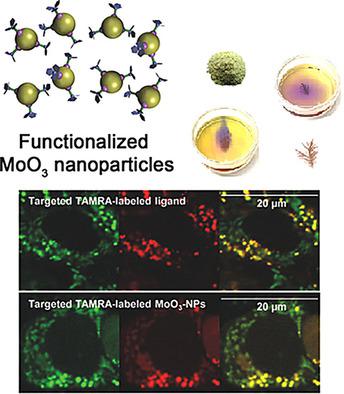当前位置:
X-MOL 学术
›
Chem. Eur. J.
›
论文详情
Our official English website, www.x-mol.net, welcomes your
feedback! (Note: you will need to create a separate account there.)
A Step into the Future: Applications of Nanoparticle Enzyme Mimics
Chemistry - A European Journal ( IF 3.9 ) Pub Date : 2018-04-26 , DOI: 10.1002/chem.201800384 Karsten Korschelt 1 , Muhammad Nawaz Tahir 2 , Wolfgang Tremel 1
Chemistry - A European Journal ( IF 3.9 ) Pub Date : 2018-04-26 , DOI: 10.1002/chem.201800384 Karsten Korschelt 1 , Muhammad Nawaz Tahir 2 , Wolfgang Tremel 1
Affiliation

|
We describe elementary concepts, up‐to‐date developments, and perspectives of the emerging field of nanoparticle enzyme mimics (so‐called “nanozymes”) at the interface of chemistry, biology, materials, and nanotechnology. The design and synthesis of functional enzyme mimics is a long‐standing goal of biomimetic chemistry. Metal complexes, polymers and engineered biomolecules capturing the structure of natural enzymes or their active centers have been made to achieve high rates and enhanced selectivities. Still, the design of new “artificial enzymes” that are not related to proteins but with capacity of production and stability at industrial level, remains a goal. Inorganic nanoparticles bear this potential. Although it seems counterintuitive to compare nanoparticles and natural enzymes because they appear very different they share many common features: nano‐size, irregular shape, and rich surface chemistry. These features enable nanomaterials to mimic reactions of natural enzymes. Representative examples with biomedical and environmental applications are given.
中文翻译:

迈向未来:纳米颗粒酶模拟物的应用
我们描述了化学,生物学,材料和纳米技术之间的基本概念,最新发展以及纳米颗粒酶模拟物(所谓的“纳米酶”)新兴领域的观点。功能酶模拟物的设计和合成是仿生化学的长期目标。捕获天然酶或其活性中心的金属配合物,聚合物和工程化生物分子已被制成以实现较高的转化率和更高的选择性。尽管如此,设计与蛋白质无关但具有工业生产能力和稳定性的新型“人工酶”仍然是一个目标。无机纳米粒子具有这种潜力。尽管比较纳米颗粒和天然酶似乎很不合常理,因为它们看起来非常不同,但是它们具有许多共同的特征:纳米尺寸,不规则形状和丰富的表面化学性质。这些特征使纳米材料能够模仿天然酶的反应。给出了具有生物医学和环境应用的代表性实例。
更新日期:2018-04-26
中文翻译:

迈向未来:纳米颗粒酶模拟物的应用
我们描述了化学,生物学,材料和纳米技术之间的基本概念,最新发展以及纳米颗粒酶模拟物(所谓的“纳米酶”)新兴领域的观点。功能酶模拟物的设计和合成是仿生化学的长期目标。捕获天然酶或其活性中心的金属配合物,聚合物和工程化生物分子已被制成以实现较高的转化率和更高的选择性。尽管如此,设计与蛋白质无关但具有工业生产能力和稳定性的新型“人工酶”仍然是一个目标。无机纳米粒子具有这种潜力。尽管比较纳米颗粒和天然酶似乎很不合常理,因为它们看起来非常不同,但是它们具有许多共同的特征:纳米尺寸,不规则形状和丰富的表面化学性质。这些特征使纳米材料能够模仿天然酶的反应。给出了具有生物医学和环境应用的代表性实例。































 京公网安备 11010802027423号
京公网安备 11010802027423号